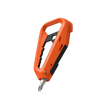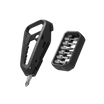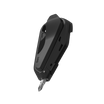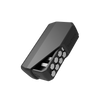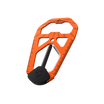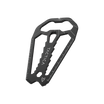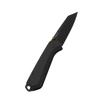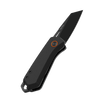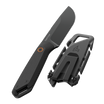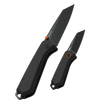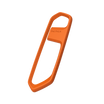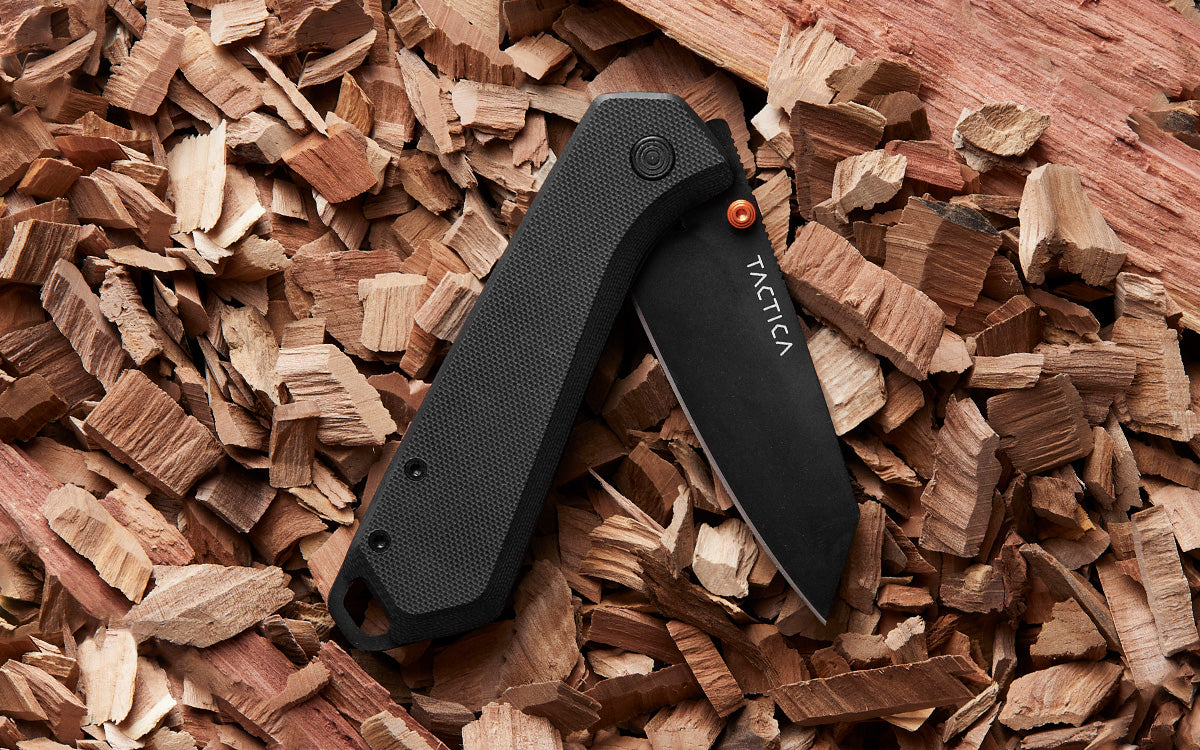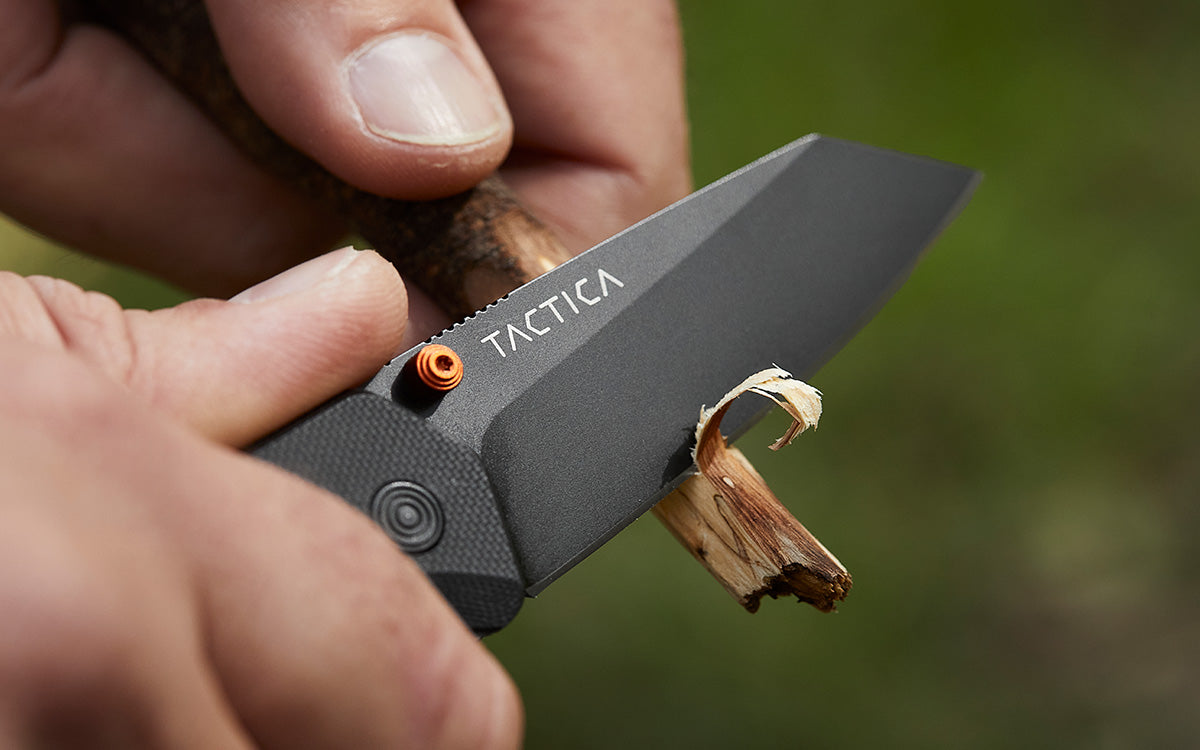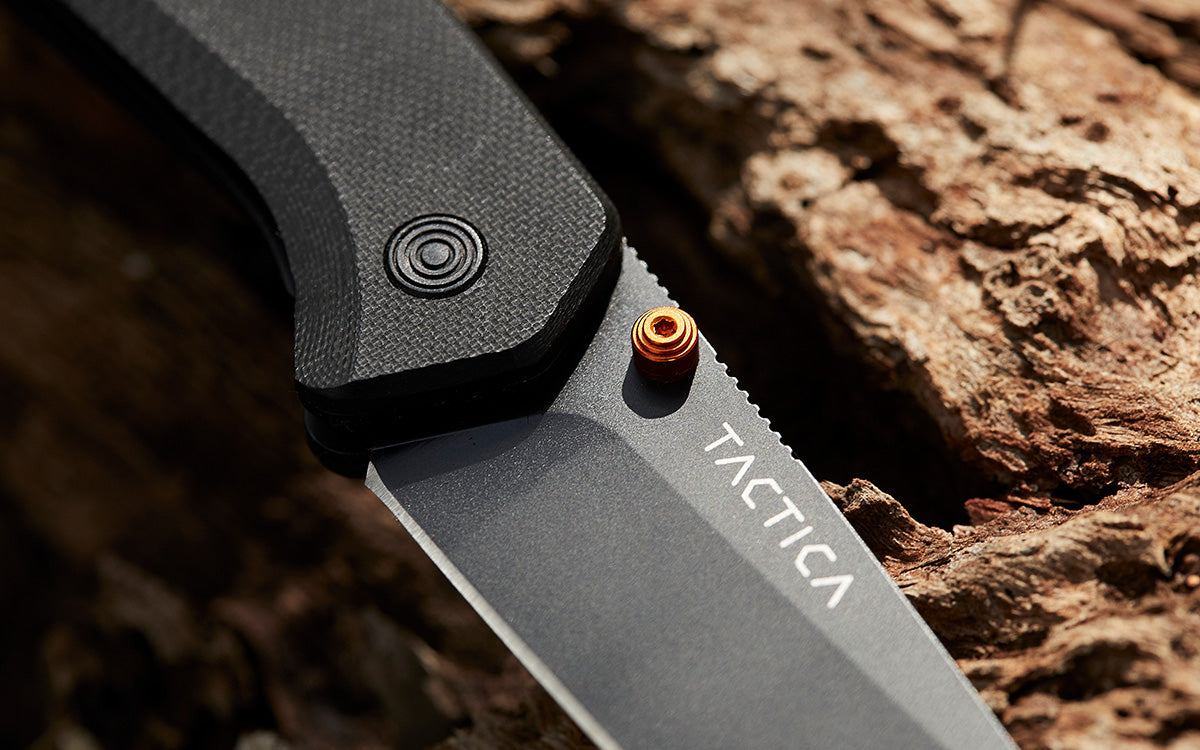When it comes to your outdoor knife, you’ve got a few things to consider. Sure, anything will do in a pinch - but don’t expect that old steak knife to last too long as a makeshift woodsplitter. Across these next few blog posts, we’ll be breaking down the big points so you know what’s what when you’re out buying tools for your next camping trip.
Part 3 - Get a grip
While it probably won’t make or break your decision, handle material plays an integral part in how comfortable you are when using your knife. The texture and grip provided by each material can differ greatly, and depending on what you’re doing, there may be an obvious winner.
G10
G10 is to handles what the Drop Point is to blades. One of the most widely used, accessible and dependable materials out there, G10 excels in almost every category. Made of laminated layers of glass-reinforced nylon, these handles resist corrosion, water and general wear with ease. G10 is available in a range of colours, and is often textured to give you a better grip. While it may feel a little slick on the edges (the texturing is usually restricted to the outside surfaces), it’s an impressive material that takes the crown for most versatile.

Micarta
Laminated in a similar fashion to G10, Micarta is comprised of dozens of layers of canvas bound together with epoxy resin. It performs just as well as G10, with great environmental resistance, but owing to the epoxy used in it’s manufacture it can become very slippery. The biggest draw for most knife owners is their hypnotic, layered appearance, with alternating layers of canvas creating unique patterns and a sense of individuality.

Wood
The oldest of the old - and favoured by purists to this day - wood offers a naturally high grip, satisfying weight and predictably great strength. With favoured varieties including oak, walnut, cherry, hickory and rosewood, their popularity is as much a functional choice as an aesthetic one. That said, synthetic materials are more common for a reason, and it’s not just the cost. Wood, like all natural materials, will deteriorate over time, and in the unforgiving outdoors that wear will only accelerate. If you want to keep your wooden handles in top condition, consider investing in some oil.

Aluminium & Titanium
While vastly different in performance, aluminium and titanium serve a relatively similar function as a handle material. Both are tough, resist corrosion, and are very lightweight compared to their strength, but this performance comes with a few big downsides. Both materials - unless textured - can get very slippery, and during the chillier month’s they’ll get uncomfortably cold. They also scratch very easily, and this is particularly noticeable on anodized models with colourful finishes. Still a pair of great, strong materials, but if you’re looking for a workhorse, look somewhere else.

Carbon fiber
Often over-hyped as the material to end all materials, carbon fiber is (mostly) deserving of it’s place as a premier handle material. Stronger than G10, lighter than Steel, titanium or aluminium and finished with that sleek, checkerboard finish, carbon fiber has found its way onto knives everywhere. It’s layered construction does have flaws, however, and when stressed against the weave it can become very brittle. Couple that with high cost and semi-slick grip, and this material may be more suited to EDC than the great outdoors.

FRN
Fiberglass Reinforced Nylon, sometimes going under the trade name of Zytel, is tough, moldable thermoplastic with a bad reputation. Far from it’s cheap plastic feel, FRN is actually quite resilient, with the glass fibers injected during it’s manufacturing giving the material great stability, resilience and longevity. However, as a molded plastic, enthusiasts have shown disdain for it over the years, opting for G10 as their synthetic material of choice. FRN is still a very capable material, and is used on a lot of cheaper knives, especially for the rough-and-tumble outdoor setting.

In conclusion,
Much like our last post about knife blade styles, there are a plethora of materials we haven’t discussed here, but these seven make up the majority of what you’ll find on the market. In our next article - and final in this series - we’ll discuss blade materials, arguably the most important aspect of choosing your knife.

